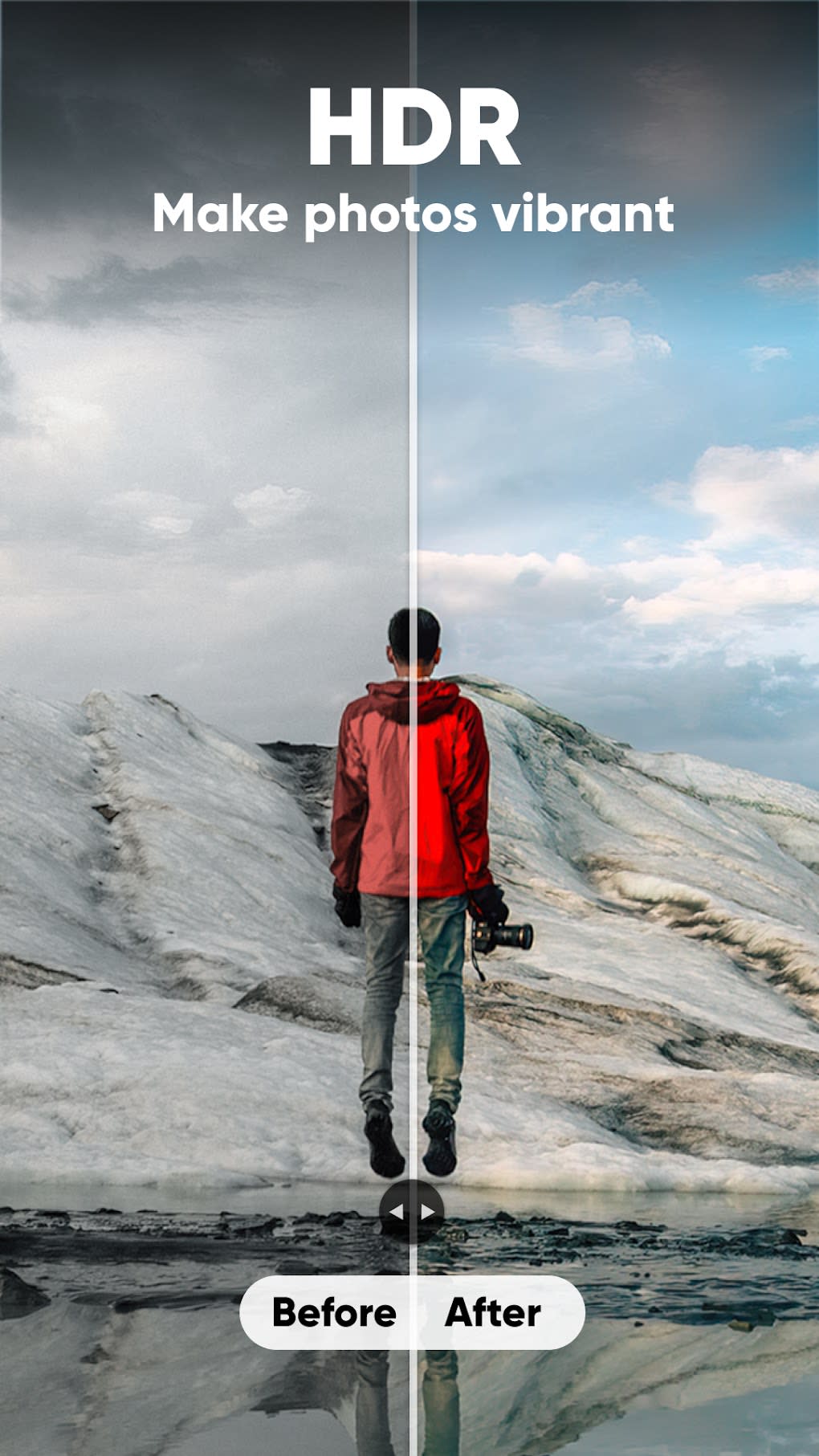

But as for the casual user, it’s more than enough. I don’t usually shoot or edit portraits, so it’s a bit hard for me to assess the power of it. It dramatically helps to edit portraits, change faces, do face sculpt and many other things. Retouch module is the most developed module in the whole app. Instead, it’s a quick and easy way to add some toning.Īlso, it allows you to apply a whole bunch of overlay textures for creative effects. It’s not a tone mapping you might know from hdr software. It allows you to pick a colour and then apply it to the image using blending modes just like in Photoshop. I’ve never seen such an adjustment in similar one-click photo enhancer apps. One tool I wanted to stop by is the Tone Mapping. The same goes for Curves – it’s a standard feature, and you can have only one.įor instance, the Crop tool has a handy set of composition layouts to help you with cropping. It seems, you can only have one Tone Mapping layer, which is a bit odd, but helps nevertheless. Tone Mapping allows you to colourise the photo with a colour + blending mode.
#Picture works photoenhancer how to#
You don’t have to know how to build them – download some presets. 3D LUT allows you to re-map colours using specific tables. Being a picture quality enhancer, PhotoWorks has 3D LUT and Tone Mapping tools for creative effects. Crop tool has built-in composition overlays – a handy feature. Tools tab contains an unprecedented amount of features and cool things. Overall, a good set of setting lacking bitness to use camera’s dynamic range in full. The Sharpness settings are intuitive and work really well. The Colour one contains the well-known HSL with the addition of the Colour Balance tab, which is nice to have. Which means, the data gets instantly converted.Įnhancements tab has three sub-tabs – Main, Colour and Sharpness. Another thing I noticed, it feels like I’m editing an 8-bit jpg file rather than the raw file.

Likewise, Highlights slider washes out the colours when moved to the right. For instance, Shadows slider when pulled into the negative space significantly increases Saturation, which is unexpected. The same sliders exist in Adobe products. This tab is for all the familiar sliders. However, even if you don’t save and close the app, next time you open the same photo, it will suggest continuing editing rather than starting from scratch. In the end, you can save the photo as a jpg file or save your edits as another preset for future use. There are five tabs, and we will briefly overview each one of them. pulling the sliders back and forth or by applying one of the many instant effects. There are two ways on how you can use this app – in an Adobe way, i.e. The workflow is straightforward – you open an image (it reads raw files too) and then process it applying various effects. A photo edited solely using PhotoWorks Workflow
#Picture works photoenhancer software#
And the last bit of users who would like it are those who photograph people as this software has many features on the face sculpt and such. Another category of users is those who love one-click photo enhancer type of software as it has a ton of presets and smart AI algorithms. Also, for those who have weak hardware and can’t run resource-demanding apps as PhotoWorks has minimal requirements. In my experience, PhotoWorks capabilities as an image enhancer will satisfy the majority of beginners. In my opinion, this photo enhancer software is suitable for whoever is starting in photography and can’t handle the standard editing process. So, today we’ll have a look at the PhotoWorks image enhancer. I’ve decided to have a look around and see if any editors could help these people start their photography journey. Another thing is some people get in trouble with the hardware requirements. I participate in a photographic community where new people often ask about editing software and quickly get discouraged by the steep learning curve industry-standard apps require.


 0 kommentar(er)
0 kommentar(er)
